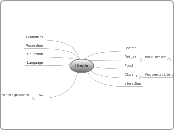by Sydnee Gorham 5 years ago
624
Final cognitive map
Understanding the diverse needs of students is critical for teachers to facilitate effective learning experiences. Future educators must become well-versed in different disabilities and the necessary accommodations to support each student'









